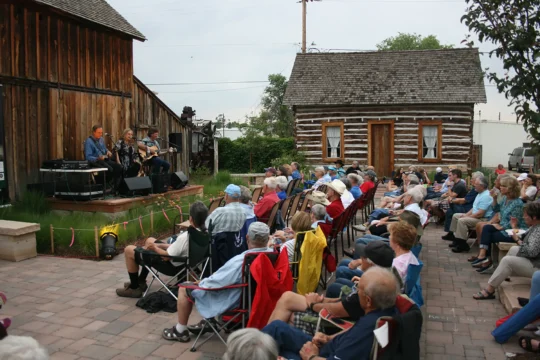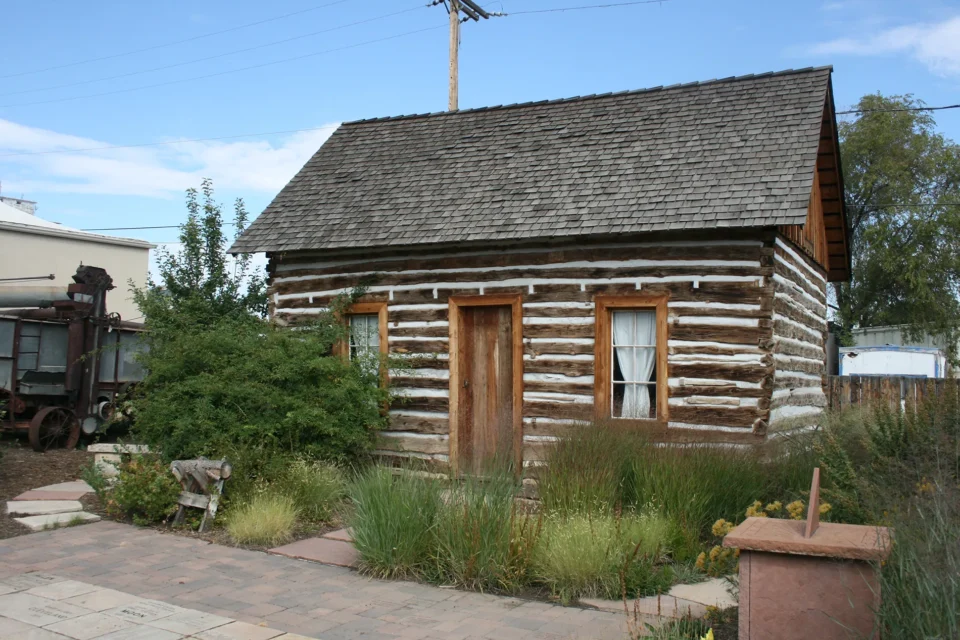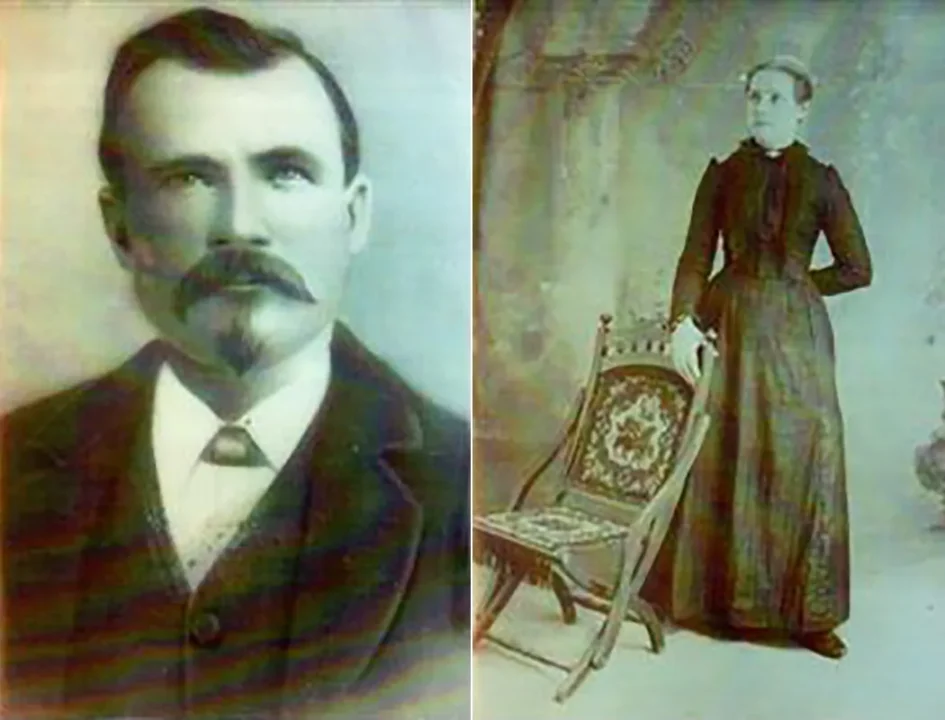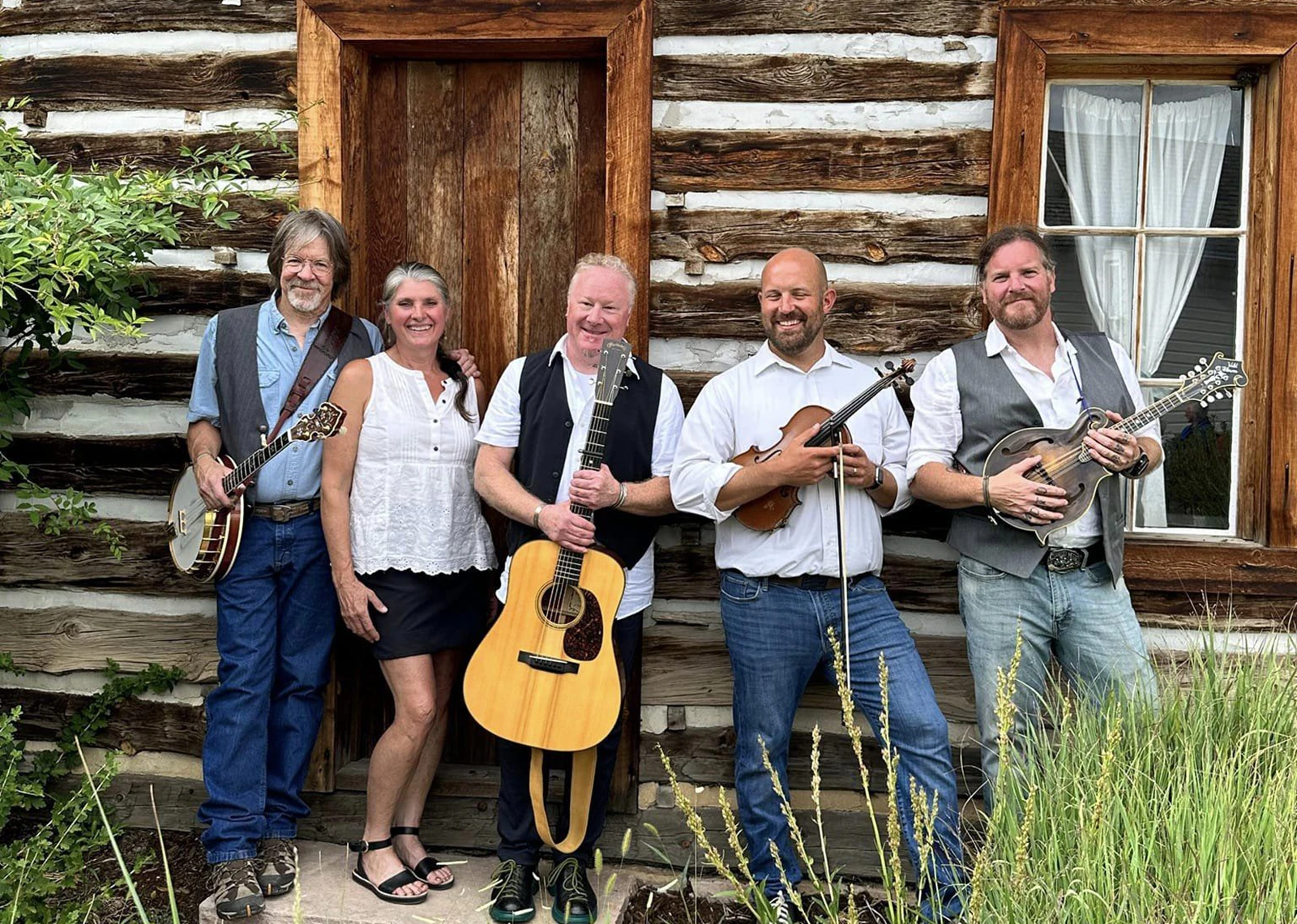In 1874 Prussian immigrant Charles Meining built a homestead cabin on the banks of Little Thompson Creek southwest of present-day Berthoud. When he married Missouri native Ava Cheetum in 1884, he added a second floor to the cabin with the idea of starting a family. Three children were born to Charles and Ava Meining—daughters Fannie and Lily, and a son named Louis.
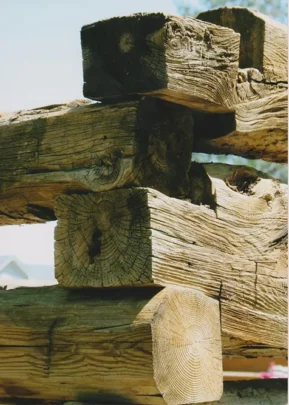
Evidence Meining’s addition of a second floor to the cabin is a change in the way the ends of logs were notched. The original cabin walls rose to a height of about six feet with logs that had a simple “flat notch.” The walls that Meining added later for the cabin’s second floor show stronger “V” or “Saddle” notches.
The family made their home in the cabin until 1901. In January of that year Charles Meining caught pneumonia and died while building a new frame house on his second homestead claim. He died at the age of 52 years.
Following Charles’ death the family moved into the new frame house and rented out the original homestead cabin. Ava Meining and her son Louis took over the family’s farming and ranching operation that included a mountain ranch at “Little Elk” near present-day Pinewood Springs. In her later years Mrs. Meining split time between the mountain ranch and the homestead cabin that her husband had built in 1874.

By the year 2000, additions had been made to Charles Meining’s 1874 homestead cabin and the structure was sheathed in modern siding. It was not until owners Gary and Julie Moon began remodeling the dwelling that they discovered there was a log cabin inside their house.
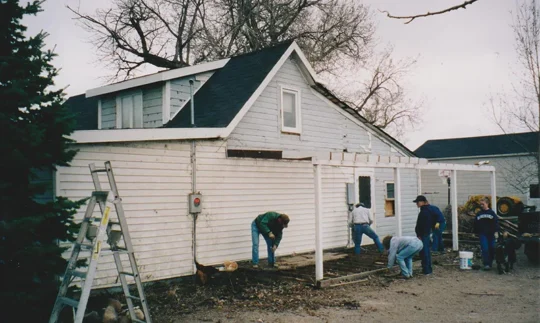
After Gary and Julie Moon decided to build a new house on the property, they donated the cabin to the Berthoud Historical Society. Along with Gary Moon, volunteers from the Society began the task of uncovering the cabin.
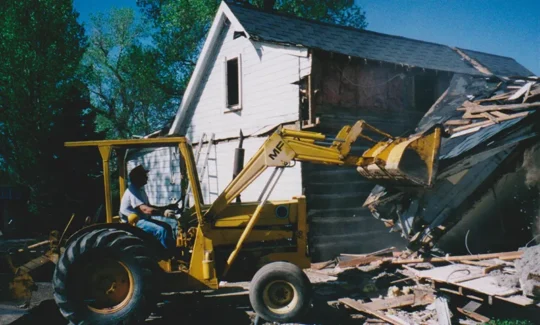
With a tractor and loader Gary Moon removed the rooms surrounding the original cabin while Society volunteers filled two enormous roll-off dumpsters with debris.
After the cabin was completely uncovered, Don Meining, grandson of Charles Meining, and Ron Meining, great, grandson of Charles Meining, visited the site.
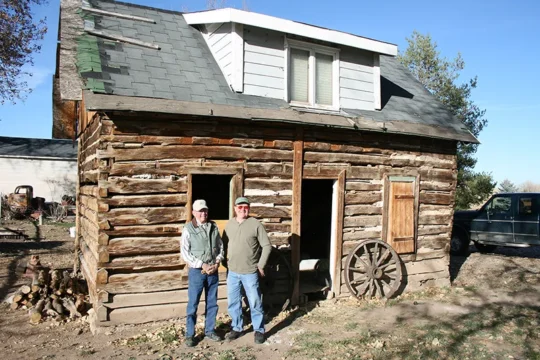
Hoping to keep the cabin at its original site, the Berthoud Historical Society hired log cabin restoration expert Peter Haney to replace the west was of the structure. Later screw-jacks and wooden beams were installed to stabilize the cabin.
In June 2011, after determining that the cabin was best suited to be an exhibit at the Little Thompson Valley Pioneer Museum, the project to dismantle and move the cabin got underway.
After removing the cabin roof, each individual log was tagged with a number to make sure that it could be put back into its correct place when the cabin was reassembled.
After removing the cabin roof, Society volunteers Clyde Merrow, Dick Magee, and Ken Krieger began dismantling the log walls.
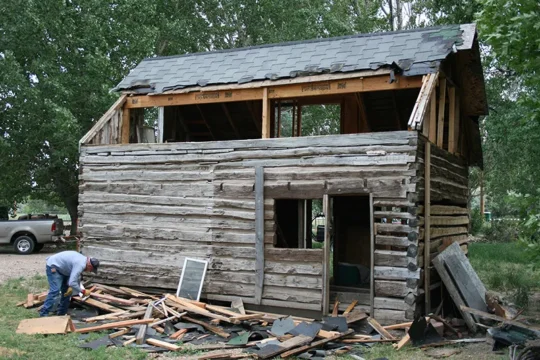
The next task was to load logs on a trailer and ferry them three miles to the Little Thompson Valley Pioneer Museum in Berthoud.
Once in Berthoud, the logs were strategically stored so that they could be put back up in the correct order.
Since the cabin’s bottom logs had been in contact with the ground for over a century, it was necessary to replace them with new logs. These logs were brought to the cabin site to be cut to length and hand-hewn to create two flat sides on each log.
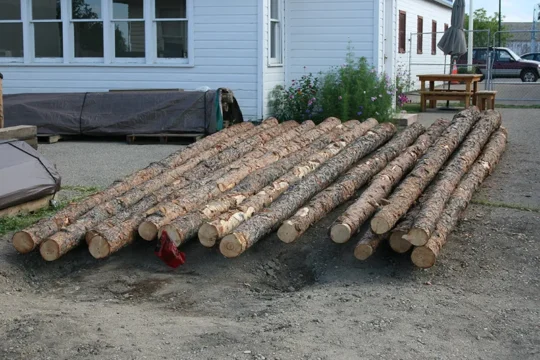
The Society hired log cabin restoration expert Bill Bailey of Denver to lead volunteers through the process of re-erecting the cabin. Bailey used a chainsaw to cut each bottom log, or “sill log” to length.
Then Bailey used an axe to hand-hew, or cut flat sides on the opposing side of each sill log.
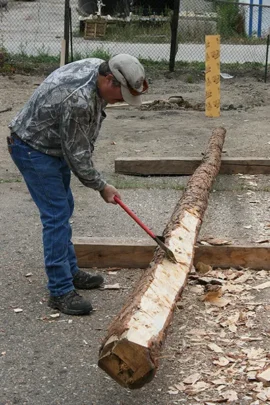
After a new foundation had been poured, the first course of logs was set in place.
A floor of rough-sawn pine was installed before two courses of the new sill logs were set in place.
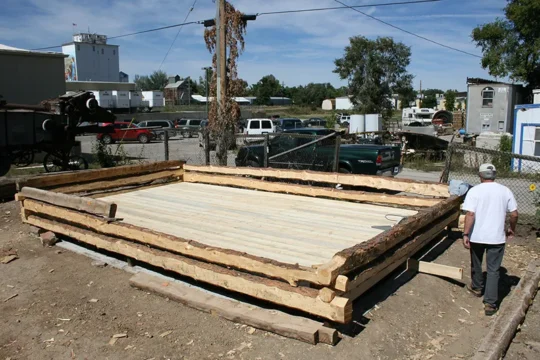
Several new logs were cut to length and hand-hewn before they were placed in the north wall. As the logs rose to shoulder height, they were temporarily held in place with 1 x 4s.
After the walls were complete, floor joists were put in notches in the top log. Care was taken to keep the original character of the curves in the cabin walls.
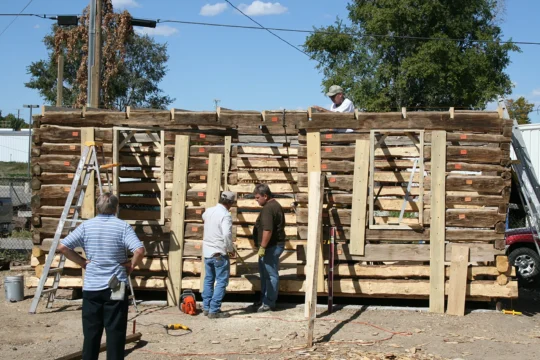
After four more courses of logs were added to the cabin walls, a new roof was added to the structure.
Local craftsman Dave Vancil then installed custom six-pane windows in door and window frames.

By May 2012 the exterior of the Meining Cabin had been completed. Work on the interior had yet to be done.

Julie Moon helped whitewash the interior of the cabin. Julie and her husband Gary donated the cabin to the Berthoud Historical Society in 2001.
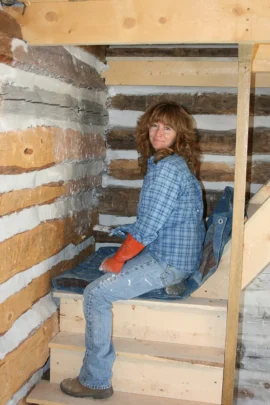
The main floor of the cabin began to take shape after the walls were whitewashed. The original ceiling in the cabin had been painted green like the window trim but a decision was made to leave the new ceiling unpainted.
The upstairs of the cabin was most likely a sleeping loft for members of the Meining family.
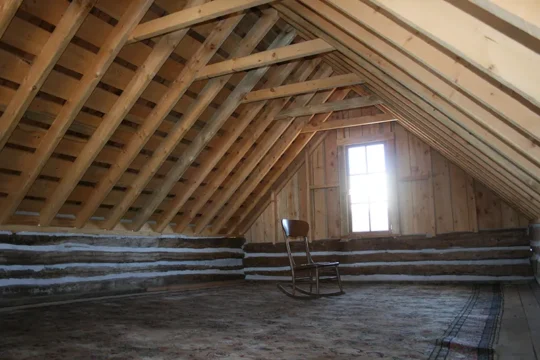
The final touch of furnishing the Meining Cabin with items that would have been found in the cabin in the 1890s was completed by the Flatiron and Longs Peak chapters of Questers.
A prize find of the Flatirons Chapter was a Buck’s Century cooking stove with all the parts. It was placed in the center of the main floor of the cabin where the original cook stove had been.
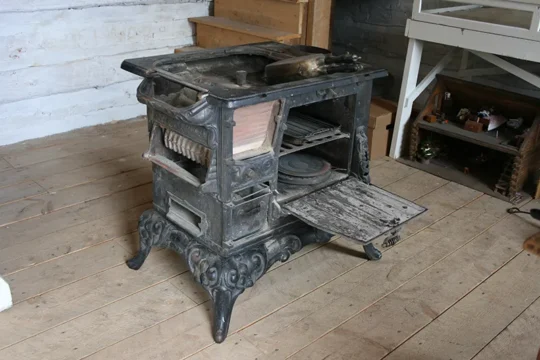
Members of the Flatirons Chapter of Questers posed for a photo in front of the cabin at its original site in 2011.

The cabin was formally dedicated on May 12, 2012. A crowd of over 100 people attended the ceremony.
The highlight of the dedication ceremony was the cutting of a ribbon at the door of the cabin by members of the Moon and Meining families. Berthoud Historical Society President Mark French presided over the dedication ceremony.
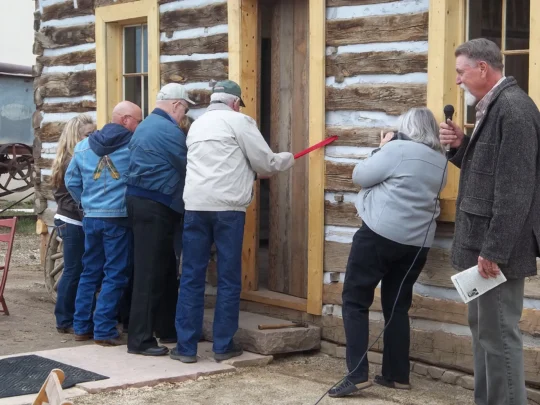
The Charles Meining 1874 Homestead Cabin is not only an exhibit at the Little Thompson Valley Pioneer Museum. It is also a place for events like a neighborhood party hosted by Gary and Julie Moon in 2018.
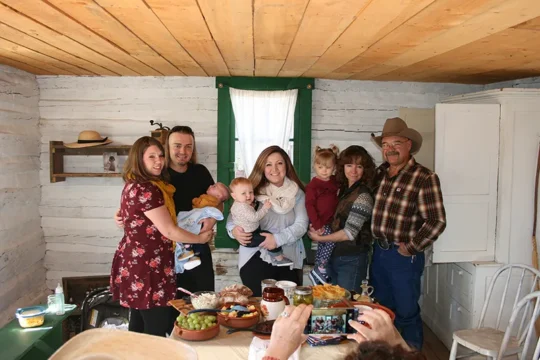
The cabin also serves as a backdrop for the Society’s “Concerts in the Pioneer Courtyard” summer series. Butch Hause’s band Reckless Abandon performed the first concert in August 2016.
